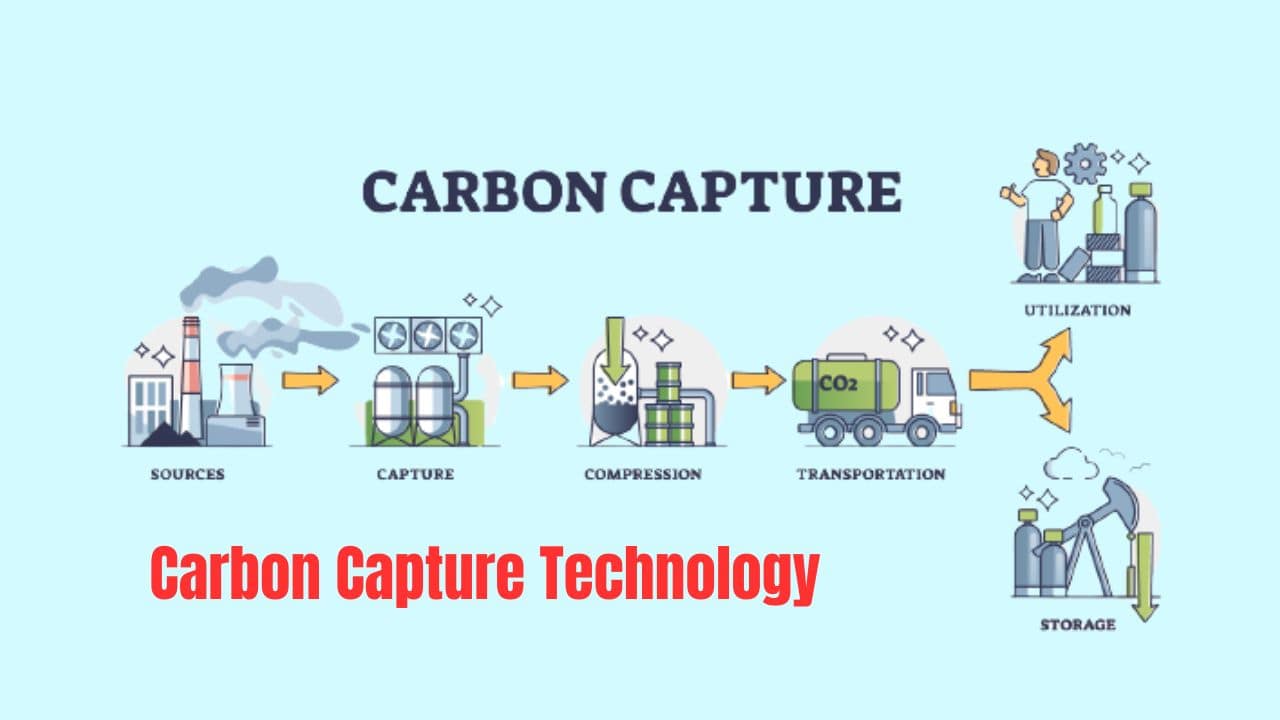Carbon Capture Technology: For some time now, climate change has become an important problem for us, whose solution needs to be taken as soon as possible. We are moving towards a low-carbon economy, and in this nature we have new technologies coming to help the climate sequester CO2.
One such technique is carbon capture, using which we have great potential to work on CO2 stars in the sky. In this blog post, we will consider the understanding, methods, advantages, and challenges of carbon capture technology as well as its role in ushering in a sustainable future.
Understanding Carbon Capture Technology
Definition of carbon capture: Carbon capture technology involves capturing carbon dioxide (CO2) from disruptive nature and power generation sites before they are released into the air. Captured CO2 is reincorporated into land elements or used for various purposes, such as improving oil recovery or by carbon sequestration.
Also Read: Game-Changing Applications of Robotics in Healthcare Industry
The important role of carbon capture: Carbon capture plays an important role in realizing climate goals. This is a direct way to link time to CO2-producing industries, such as cement production, iron production processes, and natural gas power generation sites.
Carbon Capture Methods
Post-Combustion Capture: Post-combustion capture is the most well-known carbon capture technology. This involves getting CO2 from the gases that burn fossil fuels. For this, techniques such as solvent or membrane separation are used, which allow the CO2 to be captured and then transported and stored.
Pre-Combustion Capture: Pre-combustion capture involves capturing CO2 before the fuel is burned. This all typically happens in Integrated Gasification Combined Cycle (IGCC) plants, where fossil fuels are converted into syngas, which contain CO2. First, the CO2 is separated from the syngas, and then the safe gas is used to generate electricity.
Oxy-fuel combustion: In oxy-fuel combustion, fossil fuels are burned with pure oxygen such as air. Does nature create a mix of CO2 and climate and water? CO2 can be recovered from this mixture by methods such as cryogenic separation and adsorption.
Benefits of Carbon Capture Technology
Greenhouse gas reduction: The primary advantage of carbon capture technology is its ability to significantly reduce CO2 emissions. By capturing and storing CO2, carbon capture can reduce the release of greenhouse gases into the atmosphere, thereby helping to combat climate change.
Facilitating the transition to a low-carbon economy: Carbon capture technology offers industries heavily dependent on fossil fuels a way to reduce their emissions. It enables an easier transition to a low-carbon economy by bridging the gap between current energy systems and cleaner alternatives.
Carbon utilization and enhanced oil recovery: The captured CO2 can be used in a variety of applications including carbon utilization and enhanced oil recovery (EOR). Carbon utilization involves converting CO2 into valuable products such as construction materials or chemicals, while EOR injects CO2 into oil reserves to extract excess oil and stores the CO2 permanently underground.
Challenges and Future Outlook
Cost and Energy Demand: One of the main challenges of carbon capture technology is its high cost and energy demand. Carbon capture stalls can be expensive to set up and run, and capturing and pressurizing the CO2 adds up to the cost.
Infrastructure and storage capacity: Developing the infrastructure needed to transport and store the captured CO2 is also a challenge. Suitable storage sites have to be identified, and a network of CO2 access to safe and efficient storage sites has to be created.
Policy and finance support: Policy and finance support is essential for the rapid adoption or scaling up of carbon capture technology. Governments and international organizations should provide a mechanism for regulating, processing and pricing carbon, which incentivizes the deployment of carbon capture projects.
Advancement and Awareness: To improve the development and impact of the high star of carbon capture technology, it is important to pursue further development and collaboration. Through collaboration between government, industry, and research institutions, innovation can be fostered, knowledge sharing can be fostered and carbon capture projects can be scaled up.
Conclusion
Carbon capture technology holds great potential in fighting greenhouse gas production and climate change. By capturing and storing CO2, carbon capture can become a valuable tool, paving the way for a cleaner world and us.
However, significant challenges such as cost, infrastructure, and policy support still remain. By investing in research, increasing collaboration, and providing policies, we can harness the full potential of carbon capture technology, leading to a cleaner and greener future.
